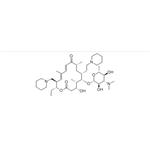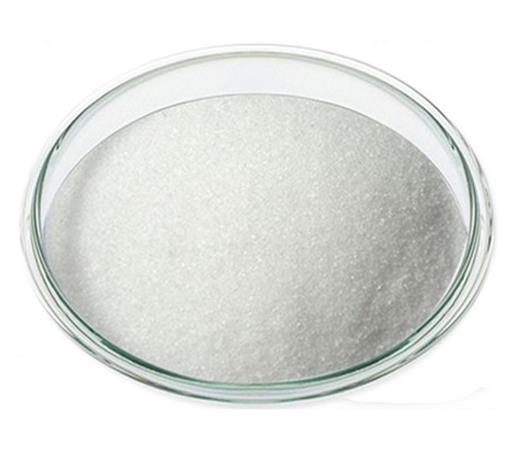Tildipirosin: A Long-Acting Solution for Livestock Respiratory Diseases
Sep 24,2024
Introduction
Tildipirosin is a semi-synthetic macrolide antibiotic that has gained significant attention in veterinary medicine, particularly for its role in treating bovine respiratory disease (BRD) in cattle. Developed as part of a larger class of macrolide antibiotics, tildipirosin distinguishes itself with its prolonged activity and broad-spectrum efficacy against various respiratory pathogens in livestock. Due to its distinct chemical properties, long-lasting effects, and relative ease of administration, tildipirosin has become an essential drug in combating respiratory infections in agricultural environments.

Figure 1 Characteristics of Tildipirosin
Properties of Tildipirosin
Chemically, tildipirosin belongs to the macrolide class of antibiotics, characterized by their large lactone ring structure. Specifically, it is a 16-membered macrolide, similar to other antibiotics in this class like tylosin and tulathromycin, though it possesses unique structural modifications that confer enhanced properties.
The molecular formula for tildipirosin is C41H71N3O8, with a molecular weight of 738.04 g/mol. The compound is semi-synthetic, derived from natural fermentation products, which are then chemically modified to improve their pharmacokinetic and pharmacodynamic profiles. Tildipirosin is known for its excellent lipophilicity, which contributes to its ability to penetrate tissues effectively. It also exhibits a long half-life, which allows for sustained therapeutic levels in animal tissues following a single dose.
Chemical Structure
Tildipirosin features a 16-membered macrolactone ring, which is the hallmark of macrolides, and is modified with several functional groups that improve its stability and absorption. It has three nitrogen atoms that contribute to its basicity, making it highly effective in targeting bacterial ribosomes, where it inhibits protein synthesis by binding to the 50S subunit. This action disrupts the growth and replication of susceptible bacteria.
Furthermore, the structure of tildipirosin allows it to evade some common resistance mechanisms that bacteria develop against other macrolides, such as efflux pumps and target-site modification. This makes it particularly valuable in settings where bacterial resistance is a growing concern.
Key Components of Tildipirosin
The primary active ingredient in tildipirosin formulations is the tildipirosin molecule itself, which is usually supplied in solution form for easy administration to livestock. The formulation is typically designed to ensure stability and bioavailability, with excipients included to facilitate injection and prolong shelf life.
Tildipirosin is formulated in a sterile solution, and its excipients are carefully selected to enhance its solubility and stability. These excipients can include solvents such as propylene glycol or polyethylene glycol, which maintain the solubility of the drug over a wide range of temperatures. Additionally, preservatives are sometimes added to ensure that the product remains free of contamination during storage and use.
Given that tildipirosin is primarily used in injectable form, the formulation must remain stable under both refrigeration and room temperature conditions, with minimal degradation over time. The excipients used in these formulations are rigorously tested for compatibility with the active pharmaceutical ingredient to ensure the safety and efficacy of the final product.
Uses of Tildipirosin
Tildipirosin's primary use is in veterinary medicine, where it is employed to treat bacterial infections, particularly those related to the respiratory system in cattle and swine. Its long-acting nature makes it ideal for livestock management, as a single dose can provide effective treatment over an extended period.
Treatment of Bovine Respiratory Disease (BRD)
Bovine respiratory disease, often referred to as BRD, is one of the most common and economically significant diseases in cattle, particularly in feedlots and high-density livestock environments. BRD can be caused by a variety of bacterial pathogens, including Mannheimia haemolytica, Pasteurella multocida, and Histophilus somni. These bacteria often infect the lungs and respiratory tract of cattle, leading to symptoms such as fever, coughing, nasal discharge, and, in severe cases, death.
Tildipirosin is highly effective against the primary bacterial pathogens associated with BRD. Its long half-life allows for a single-dose treatment, reducing the need for repeated handling of cattle, which can cause stress and potential injury to the animals. Furthermore, its ability to maintain therapeutic concentrations in lung tissue for an extended period ensures that it can effectively eradicate the infection.
Application in Swine Respiratory Disease
Tildipirosin is also used in swine to treat respiratory infections, particularly those caused by Actinobacillus pleuropneumonia, Mycoplasma hyopneumoniae, and Pasteurella multocida. Swine respiratory disease is a major concern in pig farming, where high animal densities can facilitate the rapid spread of infections.
The ease of administration and long-lasting effect of tildipirosin make it an excellent choice for treating respiratory infections in swine. As with cattle, a single-dose administration significantly reduces the labor involved in managing large groups of animals, while also ensuring that therapeutic levels of the antibiotic are maintained in lung tissue for several days after administration.
Antibacterial Spectrum
Tildipirosin exhibits a broad spectrum of activity against both Gram-negative and Gram-positive bacteria, particularly those implicated in respiratory infections. However, it is most effective against certain fastidious pathogens that commonly affect livestock.
In addition to its direct antibacterial effects, tildipirosin also demonstrates immunomodulatory properties, which can help reduce the inflammatory response associated with bacterial infections in the lungs. This makes it particularly useful in cases where respiratory infections are complicated by severe inflammation or tissue damage.
Storage and Handling of Tildipirosin
Proper storage and handling of tildipirosin are crucial to maintaining its stability and effectiveness. Tildipirosin should be stored at controlled room temperatures, typically between 15°C and 30°C (59°F and 86°F), in its original packaging to protect it from light and moisture. Once opened, the solution should be used within a specified time frame, generally 28 days, to avoid any degradation or loss of efficacy.
Freezing tildipirosin solutions should be avoided, as this can cause precipitation or crystallization of the active ingredient, rendering the product less effective or unusable. Furthermore, prolonged exposure to temperatures above 30°C can lead to degradation, reducing the shelf life of the product.
In veterinary practice, ensuring the proper storage conditions is critical for maintaining the drug’s therapeutic potential. Therefore, veterinarians and livestock handlers should follow the manufacturer’s recommendations closely regarding the storage, handling, and disposal of tildipirosin.
References:
[1] M MENGE. Pharmacokinetics of tildipirosin in bovine plasma, lung tissue, and bronchial fluid (from live, nonanesthetized cattle).[J]. Journal of veterinary pharmacology and therapeutics, 2012, 35 6. DOI:10.1111/j.1365-2885.2011.01349.x.
[2] J WANG. Pharmacokinetics of tildipirosin in beagle dogs.[J]. Journal of veterinary pharmacology and therapeutics, 2018, 41 1. DOI:10.1111/jvp.12453.
- Related articles
- Related Qustion
Supplementation with pyridoxal 5'-phosphate monohydrate can synthesize neurotransmitters such as dopamine and serotonin, maintaining a healthy nervous system.....
Nov 4,2025Biochemical EngineeringCelecoxib has emerged as a widely prescribed medication due to its targeted mechanism of action and its reduced side effects compared to traditional NSAIDs.....
Sep 24,2024APITildipirosin
328898-40-4You may like
- Tildipirosin
-

- $0.00 / 1kg
- 2025-12-17
- CAS:328898-40-4
- Min. Order: 1kg
- Purity: 99%min
- Supply Ability: 100kg
- Tildipirosin
-

- $0.00 / 1kg
- 2025-12-17
- CAS:328898-40-4
- Min. Order: 1kg
- Purity: 98%
- Supply Ability: Customise
- Tildipirosin
-

- $0.00 / 25kg
- 2025-04-15
- CAS:328898-40-4
- Min. Order: 25kg
- Purity: >98%
- Supply Ability: 10tons






